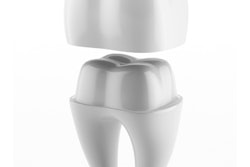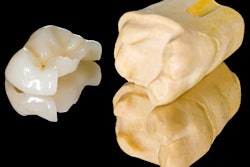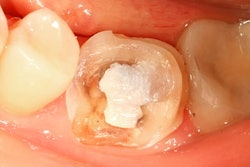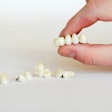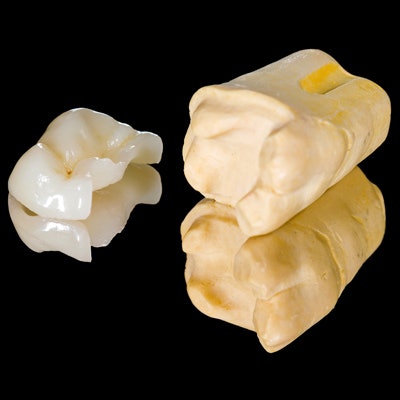
Teeth become more translucent as we age, but is the same true for uncolored zirconia ceramic restorations? Researchers put four of these restorative materials through an aging process to find out if their translucency changed over time and if these changes were noticeable to the human eye.
They reported that the translucency of all four materials decreased when put through the aging process, and that the translucency differed between the four zirconia brands tested (Journal of Prosthodontics, March 11, 2018). However, they noted that this change in translucency was unlikely to be noticed by an unaided human eye.
"Artificial aging had an influence on uncolored zirconia ceramic translucency, while there were also differences between the different ... systems investigated," the authors wrote.
The lead study author was Katarzyna Walczak, Dr med dent, of the department of prosthetic dentistry at the Carl Gustav Carus Faculty of Medicine at Technical University Dresden in Germany.
Translucency changes
The demand for so-called highly aesthetic restorations led to the creation of all-ceramic, or glass-ceramic, restorations. However, these restoratives have reduced fracture resistance. This issue was partially addressed by the introduction of monolithic tetragonal zirconia ceramic restorations.
Translucency is the ability of a material to transmit light. As the translucency of natural teeth increases as patients age, the researchers wondered if the same process occurred in four different zirconia materials.
“Artificial aging had an influence on uncolored zirconia ceramic translucency.”
They fabricated a total of 120 disk-shaped specimens (30 per group) from four zirconia materials:
- Cercon ht white (Dentsply Sirona)
- BruxZir Solid Zirconia (Glidewell Laboratories)
- Zenostar t0 (Ivoclar Vivadent)
- Lava Plus (3M)
The mean thickness of all the specimens was 0.5 mm ± 0.01 mm (standard deviation [SD]). The researchers conducted accelerated aging on the specimens in a steam autoclave at 134° C for five hours. They calculated the contrast ratios and translucency parameters for all materials before and after aging. Contrast ratio is the opacity of materials and is defined as the ratio of luminous reflectance of a material against a black background compared with a white background. Translucency parameters are the ability of a material to mask differences in the background.
Contrast ratios and translucency parameters differed significantly before and after aging in all groups. Before aging, the Zenostar t0 showed the highest translucency, and Lava Plus showed the lowest. But after aging, Cercon ht and Zenostar T showed the highest, and BruxZir and Lava Plus the lowest (see table below).
| Thickness, contrast ratio, and translucency before & after aging | |||||
| Material | Thickness in mm (mean ± SD) | Contrast ratio before aging (mean ± SD) | Contrast ratio after aging (mean ± SD) | Translucency before aging (mean ± SD) | Translucency after aging (mean ± SD) |
| BruxZir | 0.50 ± 0.01 | 0.76 ± 0.01 | 0.80 ± 0.02 | 11.66 ± 0.73 | 10.08 ± 0.67 |
| Cercon ht White | 0.52 ± 0.01 | 0.76 ± 0.03 | 0.78 ± 0.04 | 11.72 ± 1.61 | 11.12 ± 2.03 |
| Lava Plus | 0.52 ± 0.01 | 0.79 ± 0.14 | 0.80 ± 0.21 | 10.59 ± 0.72 | 10.13 ± 0.84 |
| Zenostar t0 | 0.52 ± 0.01 | 0.74 ± 0.18 | 0.78 ± 0.15 | 12.96 ± 0.89 | 10.49 ± 0.75 |
Aging reduced the translucency in all specimens tested but at levels below what the human eye can detect, the researchers reported.
Not noticeable
The authors listed no limitations to their study.
While the aging process affected all the zirconia restorations tested, the differences are small and likely not noticed by patients, they concluded.
"The aging process can influence the translucency and, thus, the aesthetic outcome of zirconia restorations," the authors wrote. "However, the changes in translucency were minimal and probably undetectable by the human eye."




